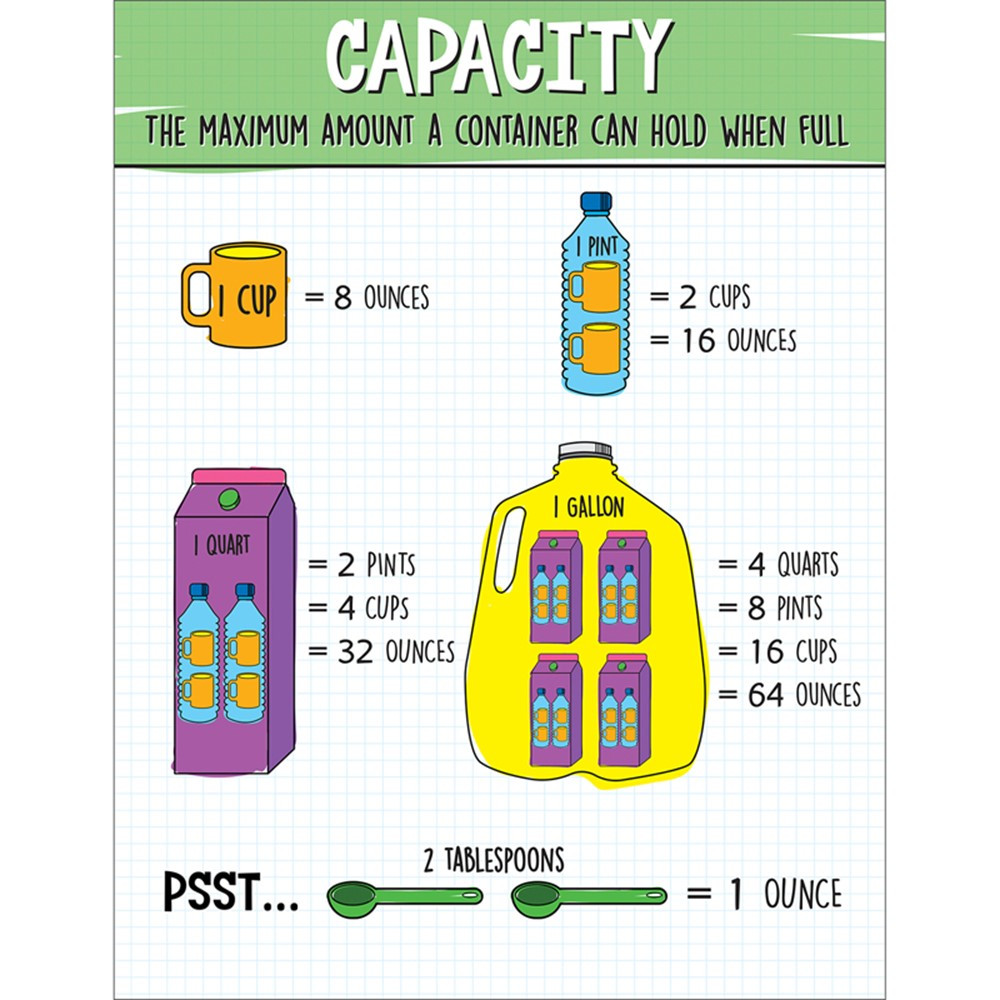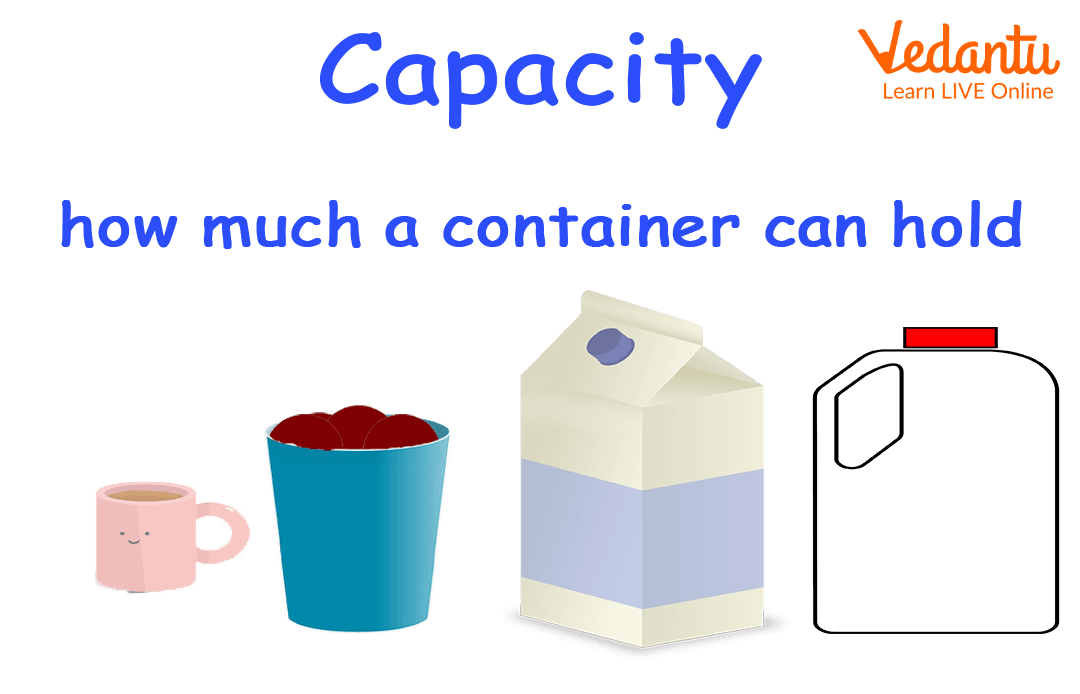Capacity Definition Math
Capacity Definition Math - Capacity is the amount of liquid a container can hold. Usually it means volume, such as milliliters (ml) or liters (l) in metric, or pints or gallons in imperial. Capacity is the amount of a substance that a container can hold, usually measured in liquid units. Learn how capacity differs from volume,. The amount that something can hold. In other words, capacity is the volume of a container given in terms of liquid measurement. Here’s a simple definition of capacity: Capacity refers to the amount of something that an object can hold before spilling over.
Capacity is the amount of a substance that a container can hold, usually measured in liquid units. In other words, capacity is the volume of a container given in terms of liquid measurement. Usually it means volume, such as milliliters (ml) or liters (l) in metric, or pints or gallons in imperial. Learn how capacity differs from volume,. The amount that something can hold. Capacity refers to the amount of something that an object can hold before spilling over. Capacity is the amount of liquid a container can hold. Here’s a simple definition of capacity:
Here’s a simple definition of capacity: In other words, capacity is the volume of a container given in terms of liquid measurement. Usually it means volume, such as milliliters (ml) or liters (l) in metric, or pints or gallons in imperial. Capacity refers to the amount of something that an object can hold before spilling over. The amount that something can hold. Capacity is the amount of a substance that a container can hold, usually measured in liquid units. Capacity is the amount of liquid a container can hold. Learn how capacity differs from volume,.
Capacity Definition, Meaning, Units, Examples Capacity Measurement
Usually it means volume, such as milliliters (ml) or liters (l) in metric, or pints or gallons in imperial. Here’s a simple definition of capacity: Capacity refers to the amount of something that an object can hold before spilling over. Learn how capacity differs from volume,. Capacity is the amount of a substance that a container can hold, usually measured.
CAPACITY adorable posters for math vocabulary MEASUREMENT AND DATA
Learn how capacity differs from volume,. Capacity is the amount of a substance that a container can hold, usually measured in liquid units. Usually it means volume, such as milliliters (ml) or liters (l) in metric, or pints or gallons in imperial. Here’s a simple definition of capacity: In other words, capacity is the volume of a container given in.
What is Capacity? Units of Capacity Conversion Maths For Kids
Capacity is the amount of liquid a container can hold. Learn how capacity differs from volume,. Usually it means volume, such as milliliters (ml) or liters (l) in metric, or pints or gallons in imperial. Capacity refers to the amount of something that an object can hold before spilling over. The amount that something can hold.
A campaign to save H20 what is Capacity?
The amount that something can hold. Learn how capacity differs from volume,. Capacity is the amount of liquid a container can hold. Capacity refers to the amount of something that an object can hold before spilling over. Here’s a simple definition of capacity:
Capacity Chart Math
Here’s a simple definition of capacity: Capacity is the amount of a substance that a container can hold, usually measured in liquid units. Usually it means volume, such as milliliters (ml) or liters (l) in metric, or pints or gallons in imperial. Capacity is the amount of liquid a container can hold. Learn how capacity differs from volume,.
Unit of Capacity Learn and Solve Questions
Learn how capacity differs from volume,. In other words, capacity is the volume of a container given in terms of liquid measurement. The amount that something can hold. Capacity is the amount of liquid a container can hold. Capacity refers to the amount of something that an object can hold before spilling over.
Measures What is Capacity? (Primary School Maths Lesson) YouTube
Capacity refers to the amount of something that an object can hold before spilling over. Capacity is the amount of a substance that a container can hold, usually measured in liquid units. In other words, capacity is the volume of a container given in terms of liquid measurement. Capacity is the amount of liquid a container can hold. Here’s a.
Measuring Capacity Definition, Units, Examples Capacity Measurement
Capacity is the amount of liquid a container can hold. In other words, capacity is the volume of a container given in terms of liquid measurement. Capacity refers to the amount of something that an object can hold before spilling over. Usually it means volume, such as milliliters (ml) or liters (l) in metric, or pints or gallons in imperial..
Capacity Vs Volume Poster Volume math, Volume math activities
In other words, capacity is the volume of a container given in terms of liquid measurement. Here’s a simple definition of capacity: Capacity is the amount of a substance that a container can hold, usually measured in liquid units. Capacity refers to the amount of something that an object can hold before spilling over. The amount that something can hold.
What is Capacity? Math Grade3 Tutway
Learn how capacity differs from volume,. Capacity is the amount of a substance that a container can hold, usually measured in liquid units. Capacity is the amount of liquid a container can hold. The amount that something can hold. In other words, capacity is the volume of a container given in terms of liquid measurement.
Learn How Capacity Differs From Volume,.
Capacity is the amount of a substance that a container can hold, usually measured in liquid units. Usually it means volume, such as milliliters (ml) or liters (l) in metric, or pints or gallons in imperial. Capacity refers to the amount of something that an object can hold before spilling over. In other words, capacity is the volume of a container given in terms of liquid measurement.
Capacity Is The Amount Of Liquid A Container Can Hold.
The amount that something can hold. Here’s a simple definition of capacity:









